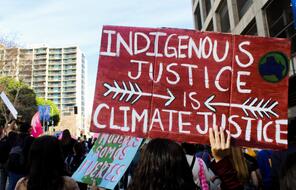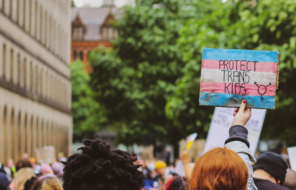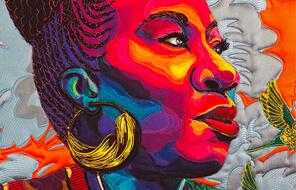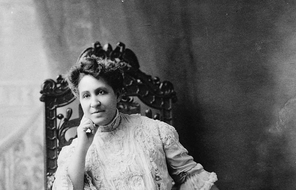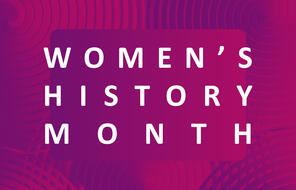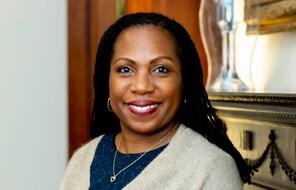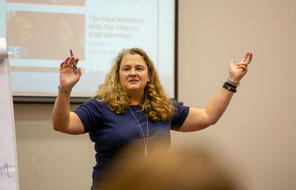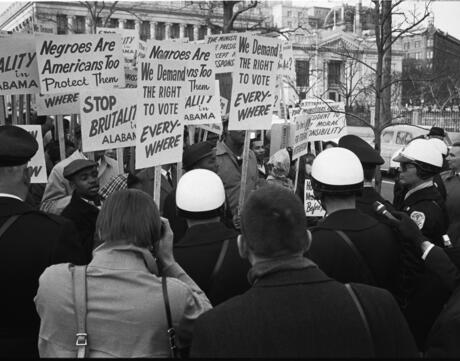
Commemorating Landmark Voting Rights Legislation and Celebrating Youth Activism
Marked by history-making demonstrations against Jim Crow laws in the South and discrimination in schools, housing, and employment across the US, the summers of 1963, 1964, and 1965 proved transformative for US law and society at large. The fight for equal rights and social justice brought the March on Washington in August of 1963 where Dr. Martin Luther King Jr. made his famed “I Have a Dream” speech, and the passages of landmark legislation in the Civil Rights Act in July of 1964 and the Voting Rights Act in August of 1965.
When President Lyndon B. Johnson signed the Voting Rights Act into law on August 6, 1965, he called it “a triumph for freedom as huge as any victory that has been won on any battlefield.” This battlefield saw proponents of civil rights squaring off against individuals, communities, and institutions across the country who were invested in maintaining the social status quo of segregation and inequality.
Now, 58 years later, the landmark legislation remains a significant achievement in safeguarding voting rights for Americans disproportionately affected by discriminatory voter suppression and disenfranchisement tactics—namely, voters of color and those who live in rural communities, are disabled, are of lower socio-economic status, or were formerly incarcerated.
At the forefront of the voting rights movement were activists like Silas Norman, John Lewis, Fay Bellamy, and other members of the Student Nonviolent Coordinating committee—young Americans who were instrumental in bringing the fight for voting access from their communities to the national stage. When their attempt to launch a voter registration drive in a march from Selma, Alabama to the state capital of Montgomery was met with a violent attack by police, citizens from across the country were inspired to join the movement. Following what became known as “Bloody Sunday,” 25,000 people, led by Dr. Martin Luther King Jr., completed the march to Montgomery on March 25.
Youth-led activism has played a significant role in shaping social and political movements throughout history and continues to influence progress and reform today. During the civil rights movement young Black Americans and their allies had to call upon great courage in countering those who wanted to maintain the social and legal structures that preserved bigotry and race-based oppression. At times, these young civic agents stood up against powerful forces in their communities, including influential political leaders and institutions. From the Little Rock Nine who were among the first Black students to integrate Arkansas’s Central High School in 1954, to the 1968 Latinx student-led walkouts in East LA to protest unequal educational opportunities, to the nationwide and even global protests for Black Lives Matter, gun control, and climate justice, young voices have brought to the forefront of civil discourse and policy change countless issues shaping their lives and the lives of generations to come. Young people often play a pivotal role in social movements as they can bring fresh perspectives to long standing societal issues and will be uniquely impacted by future problems such as climate change or growing inequality.
In recognition of the power and “potential of youth as partners in today’s global society,” the United Nations designated August 12 International Youth Day. As we approach this commemorative day, we invite educators to explore our resources to help engage students on the topics of protecting democracy, civic responsibility, the power of using their voice for positive change, and the invaluable role their advocacy plays in the protection and advancement of justice and equality.
Featured Resources:
- Voting Rights in the United States: This mini-lesson examines the history of voting rights in the US and the legislative differences among states that have reduced or increased barriers to voting and the impact of such laws on voters.
- A New Generation of Young Voters Emerges: Although young people are often catalysts for social and political movements, they consistently vote at lower rates than older generations. This mini-lesson explores why youth political participation matters and ways young people can get involved in elections beyond voting.
- Reflection and Action for Civic Participation: This lesson helps students understand the role they play in making democracy work through stories of civic participation and political philosopher Danielle Allen’s ten-question framework.
- In Pursuit of Democracy and Freedom: A US History Inquiry: Through the exploration of students’ lived experiences and examples of upstanders, this C-3 style inquiry helps students understand the complexities of democracy and freedom in US history and their own lives.



